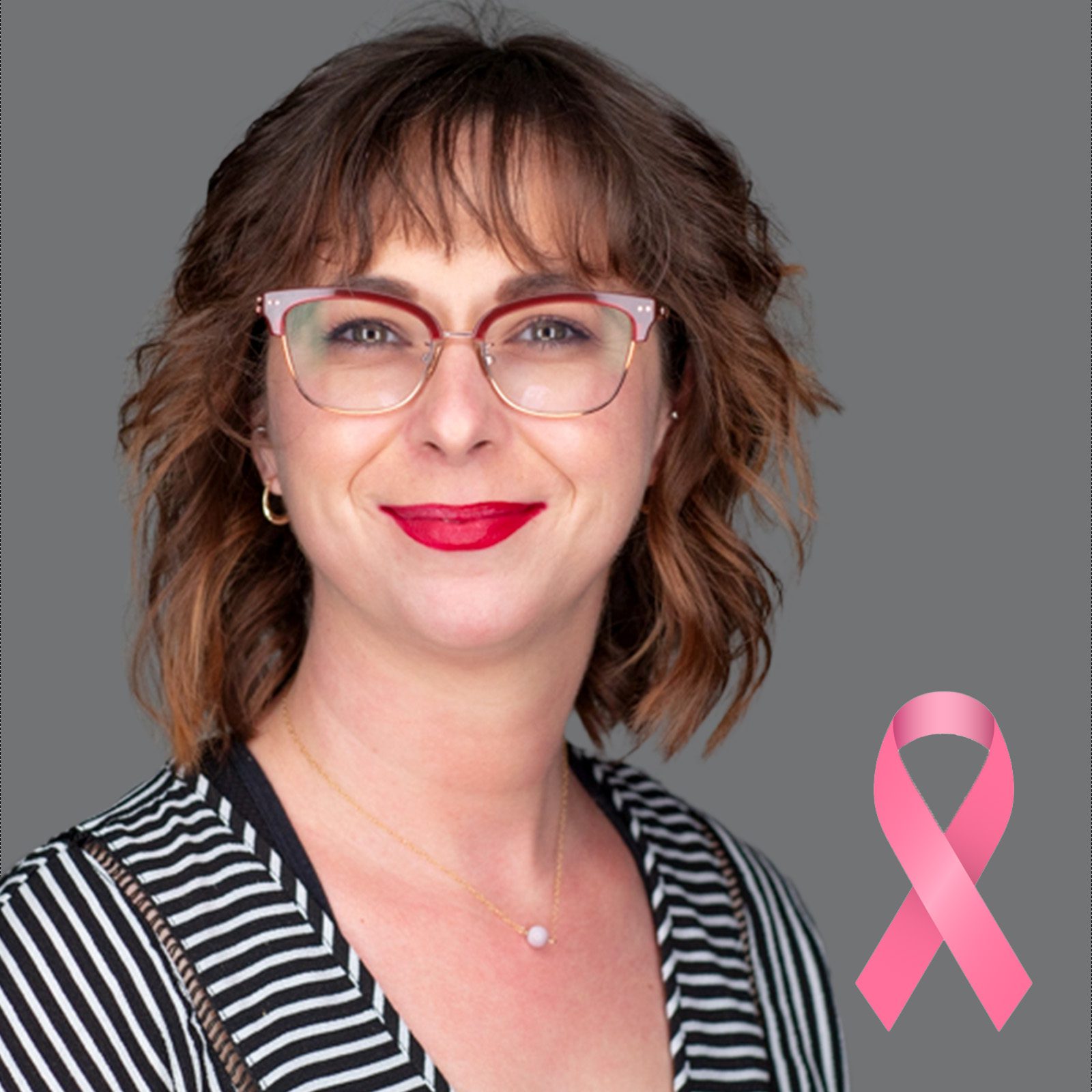Given that one in eight women in this country will develop breast cancer in her life, you will probably know someone whose life has been affected by this disease—if you don’t already. It could be a family member, a close friend, or even one of your clients. “Unfortunately, the statistics keep climbing for breast cancer, says Monica McGartland, Senior Stylist/Lead Healthcare Educator at leading scalp care brand Canviiy. “ So, it’s just more and more important for stylists to get a little educated.”
As stylists, there is so much you can do to better serve clients who may be battling breast cancer. That’s why with October being Breast Cancer Awareness Month, we enlisted McGartland to share some of her best tips for working with clients who have cancer and are currently undergoing treatment. Considering that she was previously the Salon Supervisor at the Moffitt Cancer Center, she’s an expert on this topic.
Ahead, McGartland shares her suggestions on everything from important questions to ask, to how to address potential hair loss, and why you should be prioritizing scalp care with your clients.
Know Your Client’s Treatment Plan
In order to have a clear idea of the changes that your client’s hair will be undergoing throughout their treatment, it’s important to know what their treatment plan is going to look like. While hair loss is a common side effect of cancer, not every cancer experiences it. “Just because you’re getting treated for cancer doesn’t mean you’re going to lose your hair,” says McGartland. “Sometimes your treatment plan is going to consist of radiation, sometimes it’s going to be chemotherapy, and sometimes it’s going to be immunotherapy. And, sometimes you can get a combo—a lot of breast cancer patients will get radiation and chemotherapy as a kind of duo.
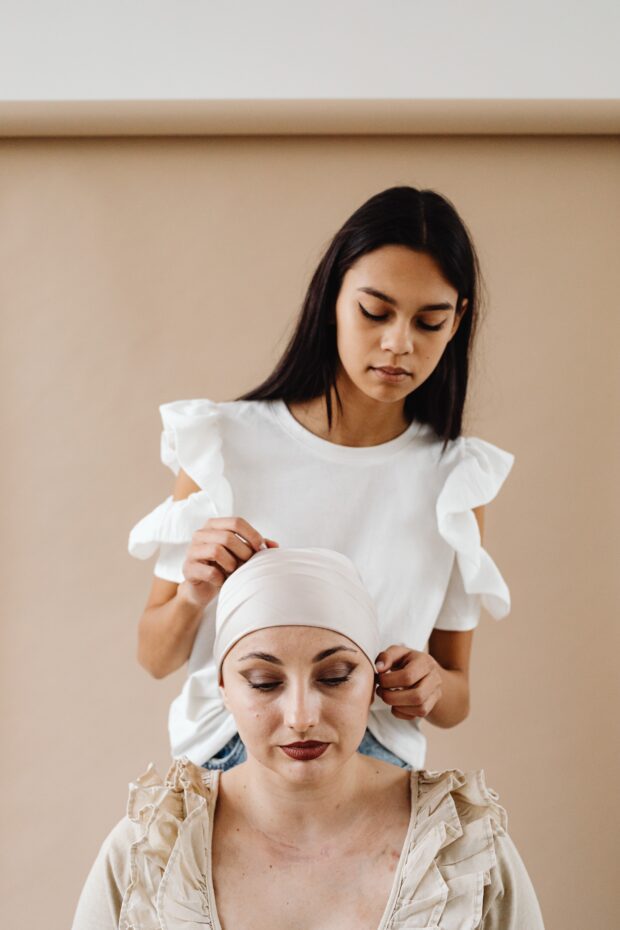
For breast cancer patients who are undergoing radiation, they’re not going to experience hair loss. “It’s a direct spot that they’re doing that radiation, and it would be that direct spot that you would lose hair,” she explains. It’s the same case with immunotherapy which is also a more direct type of treatment. However, with chemotherapy, patients can experience hair loss. “It’s just because of the way that chemotherapy works,” McGartland says. “It goes after your fastest reproducing cells in your body. Your hair is the fastest reproducing thing in your body and that’s why one of the side effects is hair loss.”
She adds that having your clients who have cancer ask their team about what to expect is the best thing to do: “They will know your treatment plan and have been working with it for a while. They’ve seen what the reactions are with other patients.”
Understand That Your Client Is Immunocompromised
As a stylist working with clients undergoing cancer treatment, it’s crucial to keep in mind that they will most likely be immunocompromised, or have an impaired immune system. “So this means that if you’re doing a haircut on short women’s and men’s hair or if you’re doing kind of that complete cut, you have to make sure that you have a guard because of the risk of infection,” McGartland says. “That’s one of the most important things to remember.” To address this early on, start by having a discussion with your client. “If your client has shared with you that they are going to be in treatment, you just have to have a conversation. You know, are you in treatment? Are you immunocompromised at this point?” she says. “And if so, then you just kind of adjust what you’re doing.”
Try to Make Your Client Feel Comfortable in the Salon
As a stylist, there are a few things that you can do to make sure any client currently undergoing cancer treatment feels at ease in the salon. According to McGartland, the most important thing is to not refuse any services but just modify them. In fact, she stresses that it all comes down to the way you present things to them. “If someone comes in and they’re in treatment and they want to get highlights, you want to say, ‘We’re not going to be able to do that today, but let’s do this for you,’” says McGartland. “I think that automatic refusal of any services offends them, because they are still a client, right? So, I always say treat them as a person and not a diagnosis. They’re not cancer patients. They’re your customers. So, you just kind of want to adjust what you’re doing.”
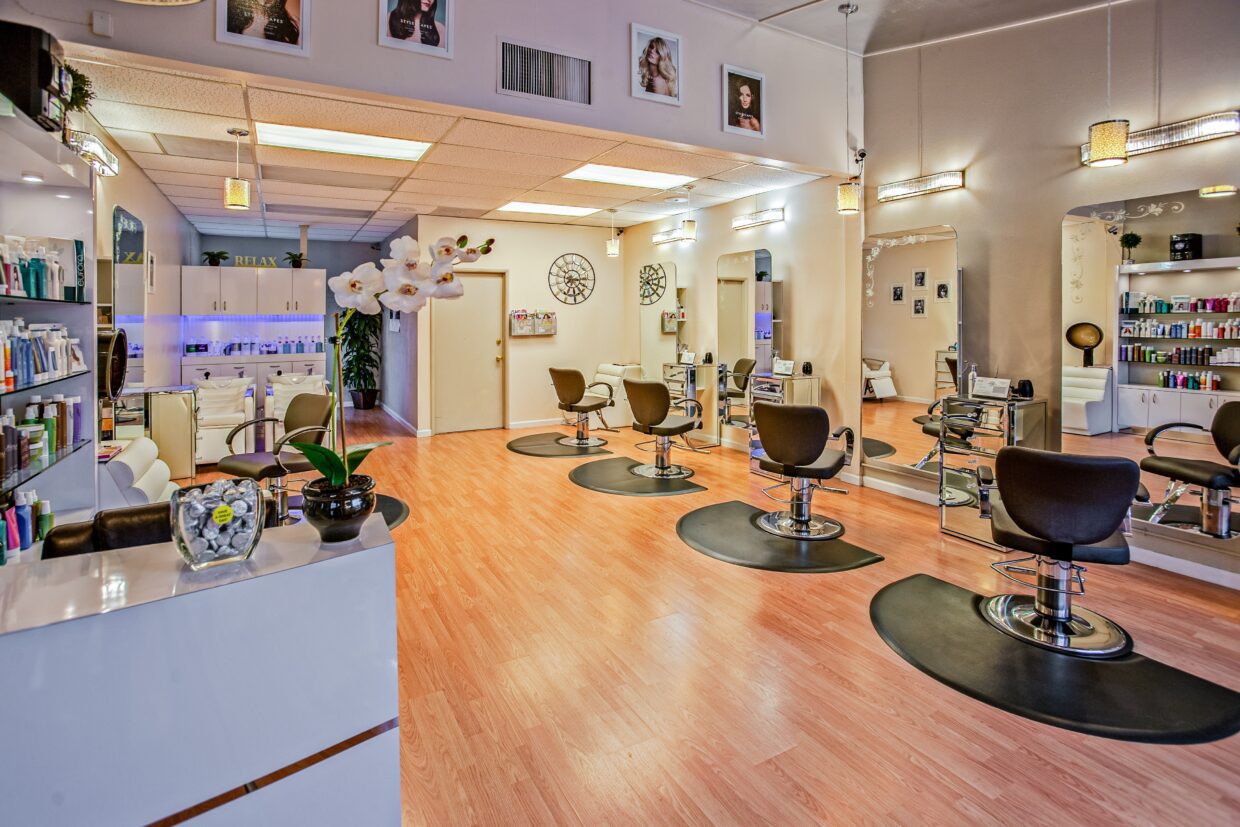
Having sensitivity towards actions or things that might be upsetting towards your client is also very helpful. “If you are in a group setting of a salon and as a stylist you notice another stylist performing a service where they’re cutting a lot of hair off, maybe be mindful and sweep that up for them,” McGartland says. “That way that patient or that client won’t see all of that on the ground because sometimes it is kind of a very emotional thing to see all the hair on the ground.”
She also recommends setting salon appointments for cancer patients earlier in the morning rather than later in the day. “It’s more private. It’s going to be quieter. They’re also going to feel a bit safer,” she says. “And as far as the sanitation, you’re the first ones there in the morning, so everything has been cleaned and sanitized and is good to go.”
Prioritize Scalp Care
When working with clients undergoing cancer treatment, it’s important to make sure that the skin on their scalp is being properly cared for. This is crucial in helping to prevent the risk of them itching or scratching their scalp which could potentially lead to an infection. “They’re in treatment, so their blood cell count is different. Not only are they at a higher risk of getting sick that way, but it can actually interfere with their treatment. They’ll get bloodwork and if their blood cell count isn’t right, they can’t get their treatment. So, it can also affect their long term as well,” McGartland explains. “Scalp care is very important to make sure that they stay on the regiment that the doctor is giving them and that way they don’t have a risk of infection as well.
Proper scalp care is also key for hair growth, which for most patients that lose their hair is one of the biggest things, according to McGartland. She adds, “Because that is the environment that the hair is coming from, we want to make sure that it is moisturized. That dry rough skin is kind of going to be a barrier for that hair to have that first kind of poking out—it’s going to be a little bit harder.”
Use Suitable Products
Of course, you want to consider the types of products that you are not only using but also recommending when working with clients undergoing cancer treatment. When it comes to haircare brands that are most suitable to use in this scenario, Canviiy ranks high up there for many reasons. “Most importantly, the products are natural. There aren’t any chemical ingredients in it, which is extremely important because you can use it throughout their entire treatment and not have to worry about it interfering with any of their treatment plans or medications that they’re taking,” say McGartland. “Another reason why is that it works, but it’s also gentle.”
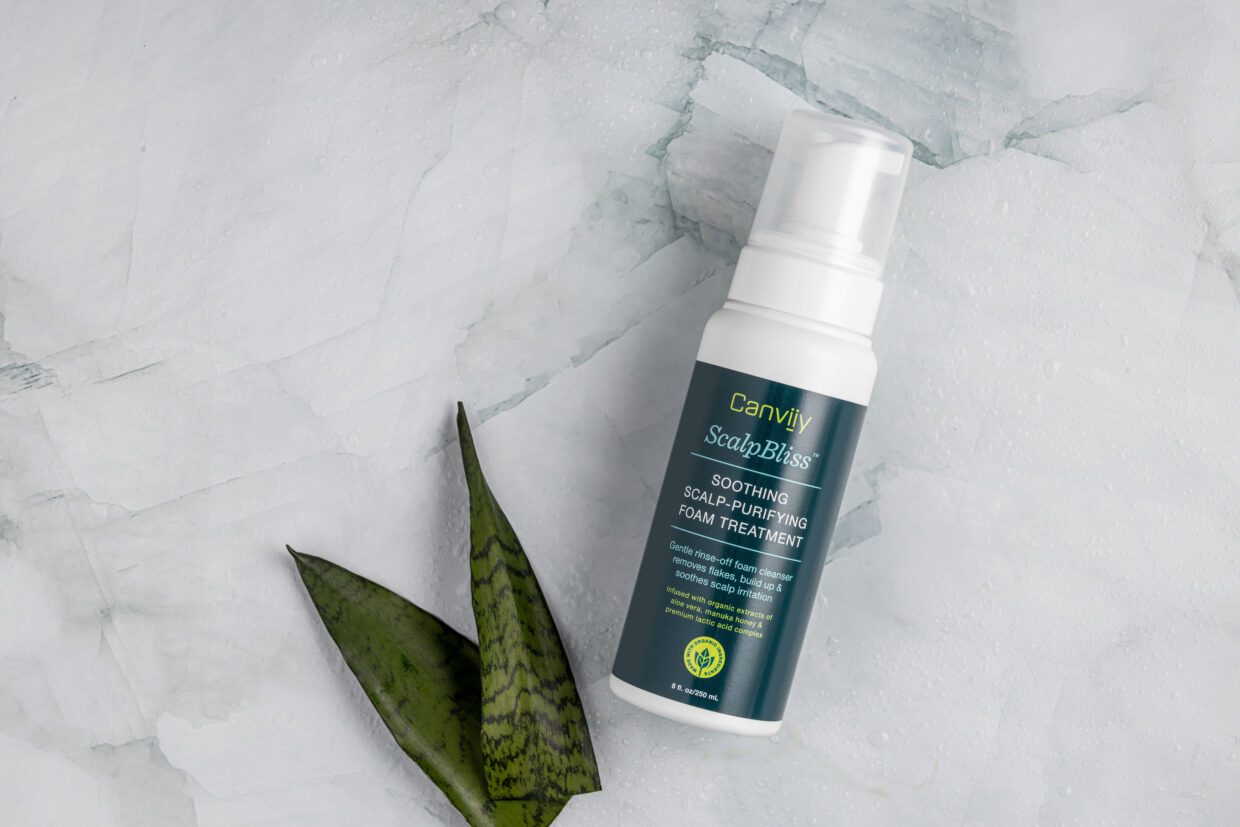
The brand’s ScalpBliss Scalp Foam Treatment (14.99) is one of her personal favorite products thanks to its ability to gently cleanse the scalp without causing aggravation or any sort of burn. According to McGartland it’s particularly great for clients who are unable to carry out everyday activities such as washing their hair due to surgeries, nausea, or having low energy. “It’s a really good option for those patients who aren’t able to do that everyday routine to make sure that they are really cleansing their scalp and getting rid of those dead skin cells,” she says.
McGartland also recommends their ScalpBliss Itch-Calming Serum ($19.99) for counteracting the side effects of itchiness and sore irritation that your clients are likely going to experience. “This product is instant relief. It can last up to like three to four days so you don’t have to constantly reapply and it’s not going to clog the pores, which again is something that we want to make sure we don’t do,” she explains. “And, it’s not only going to alleviate those side effects, but it’s going to help prevent that itch, scratch infection, which is the most important thing. According to McGartland, during her time at Moffitt Cancer Center, this serum was put on immediately after they performed a head shave. So, you can trust that it really works!
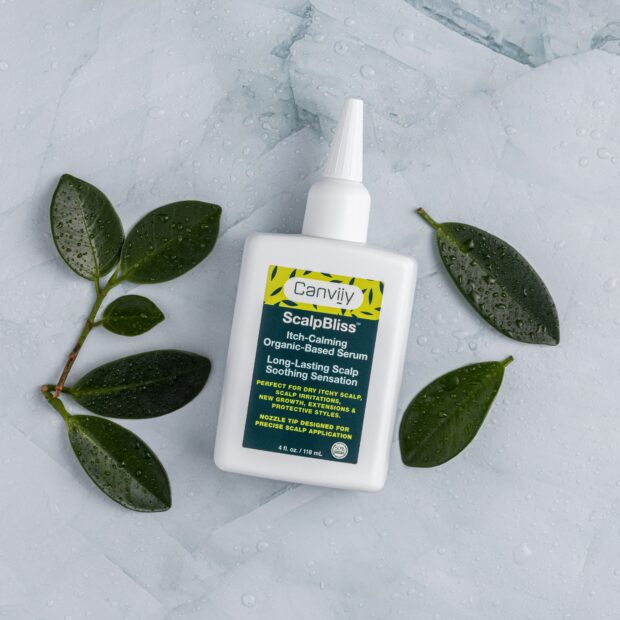
To conclude, McGartland shares that, as stylists, you will be continually doing education all the time—especially as new trends and things come out. “Maybe for the month of October just focus on cancer, specifically breast cancer, and just a little bit of education on the do’s and don’t, questions to ask, how to bring up the conversation, and what services you can perform. And, maybe it will become just an annual thing that you do every October just as a reminder,” she says.
For more information regarding Breast Cancer Awareness, be sure to visit www.nationalbreastcancer.org/breast-cancer-awareness-month/. And for the latest news from Canviiy, be sure to follow @canviiy on Instagram.
